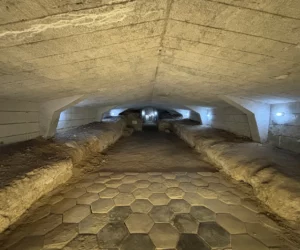Discovering the Beidongshan Han Tomb Located in Dongshan Village, Maocun Town, Tongshan District, the Beidongshan Han Tomb stands as a testament to ancient Chinese history. Located on the north bank of the Beijing-Hangzhou Grand Canal, this tomb has intrigued visitors for years with its unique design and rich history. Historical Significance The Beidongshan Han Tomb,…
Western Han Dynasty
The Western Han Dynasty, spanning from 206 BC to AD 9, marked a golden age in Chinese history, succeeding the turmoil of the Qin Dynasty’s fall. This era was characterized by significant expansion, cultural flourishing, and the establishment of patterns that would define imperial China for centuries. The dynasty was founded by Liu Bang, who emerged victorious in the power struggle following the collapse of the Qin Dynasty, proclaiming himself Emperor Gaozu of Han.
Under the Western Han, China saw a period of relative peace and prosperity, with emperors like Wu Di (reigned 141–87 BC) playing pivotal roles in its expansion and consolidation. The empire extended its borders through military campaigns, pushing into Korea, Vietnam, and Central Asia, thus securing the Silk Road’s trade routes. These conquests not only enlarged the empire’s territory but also facilitated cultural exchanges and the spread of Buddhism into China.
The Han Dynasty is notable for its administrative sophistication. The government was structured around a central bureaucracy, drawing on Confucian principles to guide its ethics and practices. This period saw the civil service examination’s inception, a revolutionary method to select government officials based on merit rather than birthright, although it became more systematically used in later dynasties.
Social and daily life in the Western Han Dynasty was marked by significant advancements. Agriculture flourished with the promotion of iron tools and the introduction of new crops, supporting a growing population. Silk production and the arts thrived, with the era producing enduring literary and historical works, including Sima Qian’s “Records of the Grand Historian.”
Religion during the Western Han was a complex tapestry that included ancestor worship, Confucianism, Taoism, and the introduction of Buddhism towards the dynasty’s end. These beliefs coexisted and influenced each other, shaping the spiritual and moral outlook of the people.
The dynasty’s decline began with internal strife and corruption within the imperial court. The usurpation by Wang Mang in AD 9, who established the short-lived Xin Dynasty, temporarily interrupted the Han lineage. However, the Eastern Han Dynasty would later restore Han rule, continuing its legacy until AD 220.
Wars and battles were pivotal in the Western Han’s expansion and defense. The Han–Xiongnu War, for instance, was a series of military engagements over several decades that ended with the Han Dynasty’s decisive victory, securing the northern borders and ensuring the safety of the Silk Road trade routes.
The Western Han Dynasty’s legacy is profound, laying the foundations for much of Chinese culture, government, and society. Its influence extends far beyond its historical period, resonating through subsequent dynasties and into modern China.
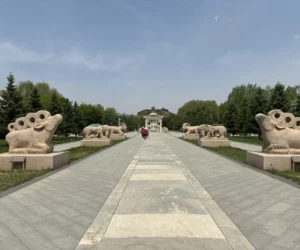
Wang Zhaojun Tomb and the Ethnic Unity of China
The Tomb of Wang Zhaojun: A Symbol of Unity and Friendship The Tomb of Wang Zhaojun, also known as Qingzhong, stands prominently in the central area of the Zhaojun Museum. This historical site is located on the expansive Hohhot Plain within the Great Wall region of northern China. The tomb, shaped like an inverted funnel,…
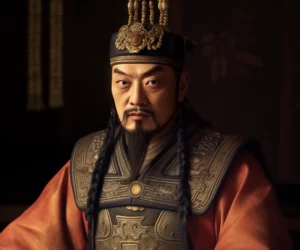
Emperor Hui of Han (Liu Ying)
Early Life and Ascension of Liu Ying Liu Ying, born in 210 BC during the Qin dynasty, was the second son of Liu Bang, the founder of the Han dynasty, and Empress Lü. Despite not being the eldest son, Liu Ying was designated as the heir due to his mother being Liu Bang’s wife. His…
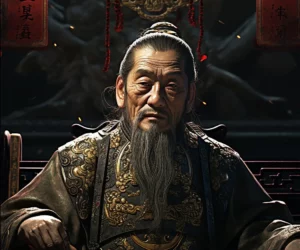
Emperor Ai of Han
Early Life and Ascension of Emperor Ai of Han Emperor Ai of Han, born Liu Xin in 25 BC, ascended the throne at the age of 20. His uncle, Emperor Cheng, who was childless, named him heir. Emperor Ai reigned from 7 BC to 1 BC. His rise to power was marked by high hopes…
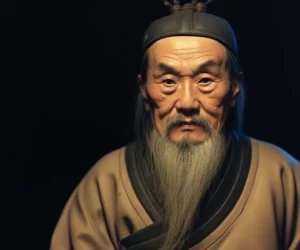
Emperor Yuan of Han
Early Life and Ascension of Emperor Yuan of Han Emperor Yuan of Han, born Liu Shi in 75 BC, came from a lineage marked by tragedy and resilience. His father, Liu Bingyi, survived a brutal purge that claimed his own father, Liu Ju, due to Emperor Wu’s paranoia. Despite these hardships, Liu Shi ascended from…
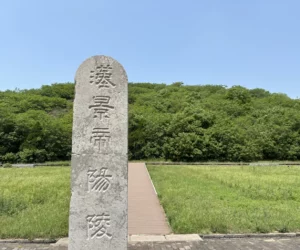
Yangling Mausoleum of Han
Han Yangling Mausoleum, located at the eastern end of the Xianyang Plain, serves as a joint burial site. It houses the tombs of Jingdi Liu Qi, the fourth emperor of the Western Han Dynasty, and his empress, Wang Zhi. This significant archaeological site spans approximately 6 kilometers in length and varies from 1 to 2 kilometers in width.

